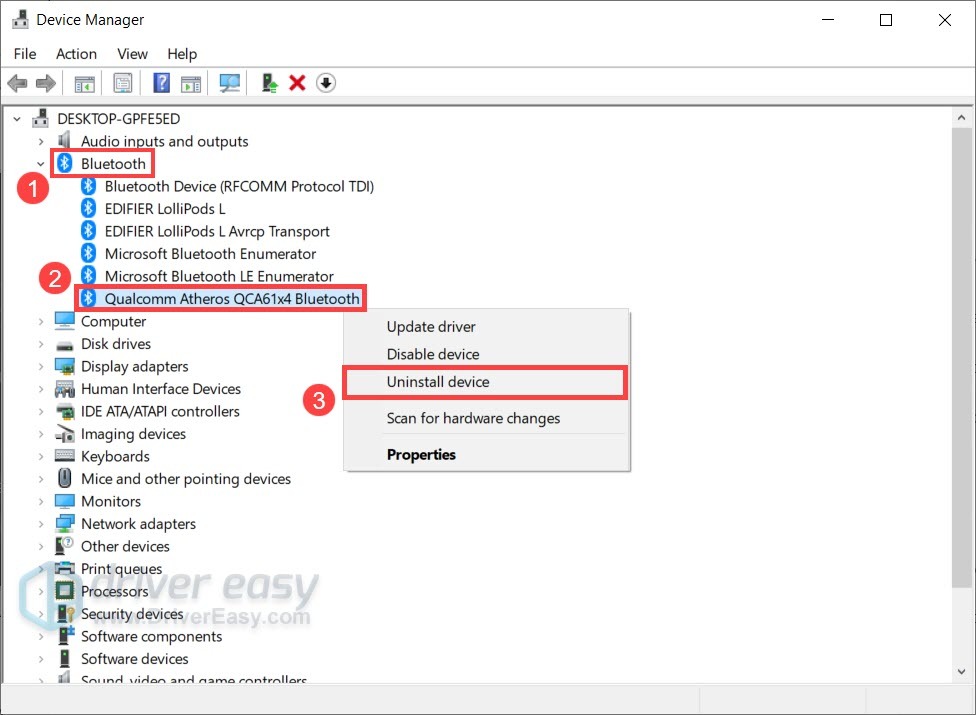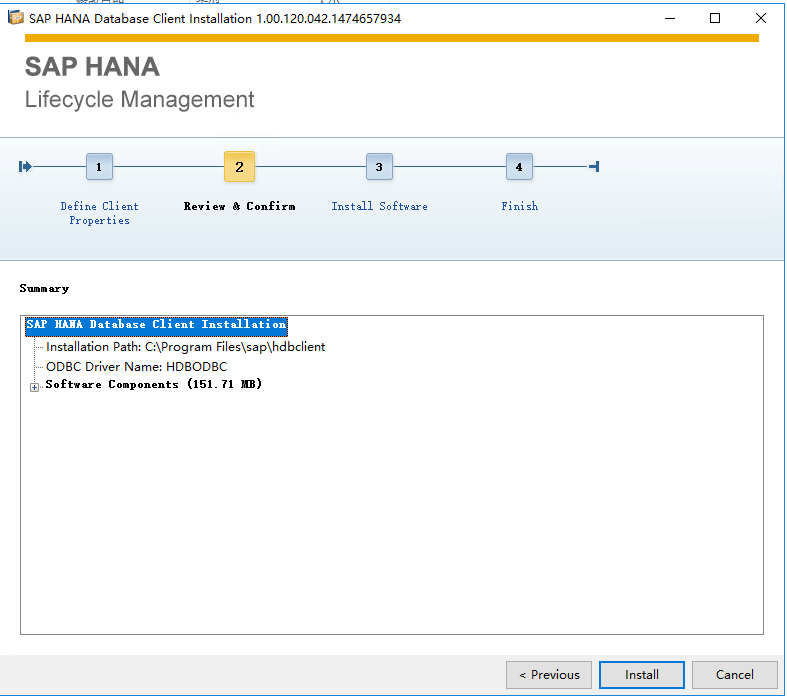

- Hdbodbc driver windows install#
- Hdbodbc driver windows 64 Bit#
- Hdbodbc driver windows drivers#
- Hdbodbc driver windows download#
- Hdbodbc driver windows windows#
The task will run and generate the scripts for creating the CDC artifacts in the following location and then stop: Once the task is defined, select any of the Metadata only options in the Advanced Run Options window, and then click OK.
Define the task as you would any other Replicate task, but when configuring the SAP HANA source endpoint, clear the Create CDC Artifacts check box in the Advanced tab. When defining the SAP HANA source endpoint, make sure that the Create CDC Artifacts check box in the Advanced tab is selected (the default). To create the CDC artifacts automatically (the default): The table will either be created in the schema of the user specified in the General tab of the SAP HANA endpoint settings, or in the schema specified in the endpoint settings' Advanced tab. During the task, Replicate reads the changes from the attrep_cdc_log table and deletes the old data according to the cleanup settings (specified in the endpoint's Advanced tab).  The Replicate attrep_cdc_log table: When the Use log table option in the SAP HANA endpoint's Advanced tab is enabled, changes are copied from the attrep_cdc_changes table to the attrep_cdc_log table. This may not be the actual number of UPDATEs performed on the source since UPDATEs are sometimes merged with INSERTs (depending on when the attrep_cdc_changes table was last scanned). The Replicate attrep_cdc_changes table: This table will contain changes captured by the triggers and will either be created in the schema of the user specified in the General tab of the SAP HANA endpoint settings, or in the schema specified in the endpoint settings' Advanced tab.Īs Replicate periodically scans the attrep_cdc_changes table for changes, the number of UPDATEs shown in the monitor's Change Processing tab reflects the number of UPDATEs found (in the attrep_cdc_changes table) at the time of scanning. The triggers will be created in the source table schema. A separate trigger is required for each DML operation. Three triggers for each of the designated source tables: The triggers capture changes to the source tables (INSERTs, UPDATEs, and DELETEs) and write them to the Replicate attrep_cdc_changes table described below. Replicate requires the following artifacts to be created in the source database (either manually by the DBA or automatically by Replicate): The prerequisites for both of these methods are described below. The driver name is HDBODBC.Īdd the following section to the odbcinst.ini file located in directory /etc:Ĭhanges can be captured from SAP HANA using either of the following methods:
The Replicate attrep_cdc_log table: When the Use log table option in the SAP HANA endpoint's Advanced tab is enabled, changes are copied from the attrep_cdc_changes table to the attrep_cdc_log table. This may not be the actual number of UPDATEs performed on the source since UPDATEs are sometimes merged with INSERTs (depending on when the attrep_cdc_changes table was last scanned). The Replicate attrep_cdc_changes table: This table will contain changes captured by the triggers and will either be created in the schema of the user specified in the General tab of the SAP HANA endpoint settings, or in the schema specified in the endpoint settings' Advanced tab.Īs Replicate periodically scans the attrep_cdc_changes table for changes, the number of UPDATEs shown in the monitor's Change Processing tab reflects the number of UPDATEs found (in the attrep_cdc_changes table) at the time of scanning. The triggers will be created in the source table schema. A separate trigger is required for each DML operation. Three triggers for each of the designated source tables: The triggers capture changes to the source tables (INSERTs, UPDATEs, and DELETEs) and write them to the Replicate attrep_cdc_changes table described below. Replicate requires the following artifacts to be created in the source database (either manually by the DBA or automatically by Replicate): The prerequisites for both of these methods are described below. The driver name is HDBODBC.Īdd the following section to the odbcinst.ini file located in directory /etc:Ĭhanges can be captured from SAP HANA using either of the following methods: Hdbodbc driver windows install#
Linux: Install the SAP HANA ODBC 64-bit Driver 2.x for Linux on the Replicate Server machine.
Hdbodbc driver windows windows#
Windows: Install the SAP HANA ODBC 64-bit Driver 2.x for Windows on the Replicate Server machine. Open inbound port number 3xx15 to the SAP HANA server where xx is the instance number of the SAP HANA database that contains the source tables.įor example, the port for instance 90 would be 39015. SAP IQ ODBC version: SYBASE IQ 17.Before SAP HANA can be used as a source endpoint in a replication task, the prerequisites described in this section must be met. The driver is installed as part of the SAP IQ client installation. The driver is installed as part of the SAP HANA client installation. Microsoft Dynamics 365 version: 9.1 SAP ASE (Sybase) Hdbodbc driver windows 64 Bit#
ODBC version: Devart for Dynamics CRM 1.6.11 64 bit ODBC version: Microsoft Access Driver 64 bit Microsoft Dynamics 365 64 bit IBM Db2 for iSeries (Db2 for IBM i) ODBC version: 2.6.4 (64 bit) Google BigQuery ODBC version: 2.6.1 (64 bit) Apache Impala 64 bit Apache CassandraĪpache Cassandra version: 3.11.3 Apache Hive
Hdbodbc driver windows drivers#
It is highly likely it will work with other drivers as well. We have tested and successfully connected to and imported metadata from database with ODBC drivers listed below.

Your database schema has been imported to new documentation in the repository. Navigate to the path HKEYLOCALMACHINE\SOFTWARE\ODBC\ODBCINST.INI\ODBC Drivers, and click on this key to display the strings it contains. To start the Windows registry editor, click Start, Run, type regedit, and click OK. You can now change the name of your documentation.Ĭlick Import to start the import, and when it ends, close the window with Finish button. To correct this problem, do the following: 1. If connection is successful, Dataedo will show a list of objects from the database. Select and choose the DSN you created and click connect. In the DBMS field, select Other (ODBC connection). To do this, open Control Panel, access Administrative Tools, then open either ODBC Data Sources (64-bit) or ODBC Data Sources (32-bit).Ĭlick User or System DSN tab, then click add.Ĭreate a new documentation by clicking Add documentation and choosing Database connection. Then, create a User or System DSN (data source name).
Hdbodbc driver windows download#
First, download and install ODBC Driver for your database.







 0 kommentar(er)
0 kommentar(er)
